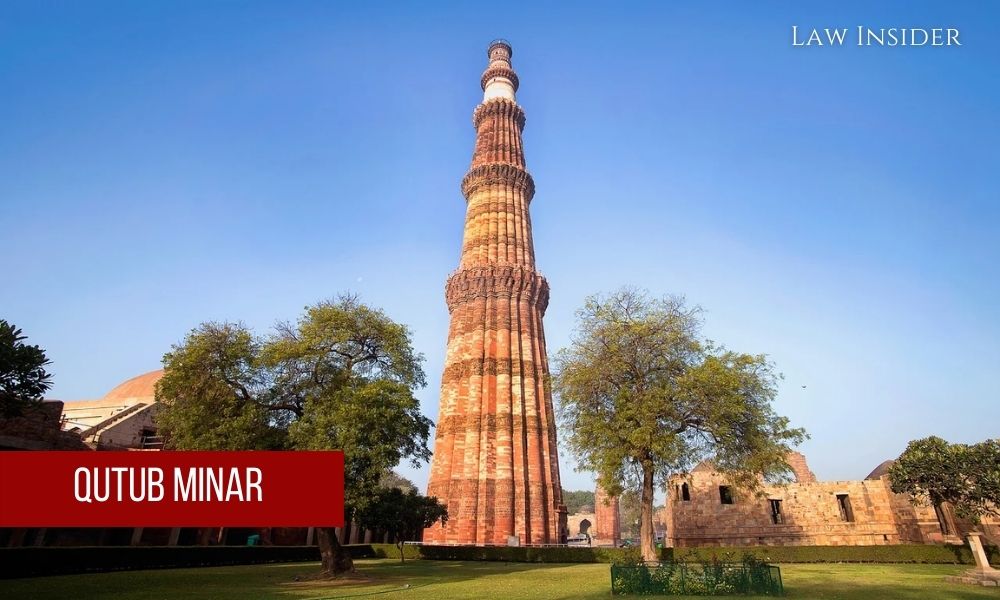Sakina Tashrifwala
Published on: September 21, 2022 at 21:37 IST
A Delhi Court dismissed an intervention application filed by one Kunwar Mahendra Dhwaj Prasad Singh on Tuesday in relation to appeals seeking the restoration of alleged temples in the Qutub Minar complex in Delhi.
Singh sought the right to the territories running between the rivers Yamuna and Ganga from Agra to Meerut, Aligarh, Bullandshahr, and Gurgaon.
After hearing from Attorney Manohar Lal Sharma for the intervenor, Attorney Subhash Gupta for the Archaeological Survey of India (ASI), and an Attorney for one of the appellants, Additional District Judge Dinesh Kumar issued the ruling.
“The application of the applicant is dismissed and disposed of accordingly,” the Judge said.
On September 13, the subject was reserved for order.
The appeals hearing date has now been set for October 19.
Because Singh has not clearly asserted any rights in the appeal and lacks locus standi to be added as a party, ASI had contended that the intervention application should be denied.
Additionally, ASI said that Singh had been holding on to claims to enormous and expansive lands in numerous states for the previous 150 years without bringing the matter before a court.
According to ASI, the Delhi High Court rejected a similar appeal made by a woman named Sultana Begum who claimed to be the widow of Bahadur Shah Zafar II, the final Mughal emperor, and who sought possession of Red Fort.
Her plea was rejected on the grounds that she had approached the court with excessive delay.
Regarding Implementation Application
According to the petitioner, the intervenor is Karta of the Beswan Family, who is the 1950-deceased Raja Rohini Raman Dhawaj Prasad Singh’s heir. The Beswan Family was a Jat family descending from Raja Nand Ram, who passed away in 1695, according to the application.
The application claimed that after Shah Jahan’s death in 1658, the Jat consideration had become firmly established.
Raja Nand Ram, a great-grandson of Makan, found a way to become the leader of his tribe and was backed by the poarch Raja of Daryapur during the war that was ensured for the possession of the throne.
The application went on to claim that under the reign of Raja Rohini Raman Dhawaj Prasad Singh in 1947, another Ruler from the same family, British India and its provinces attained freedom and independence, and that he was the owner of the Beswan Avibajya Rajya Beswan Estate, Hathras Estate, Musran Estate, and Brindaban Estate from the Mahabharata Period, from Meerut to Agra between the Ganga and, Jamuna till his death in the year 1950.
It also noted that, in accordance with 1950 legislation, Raja Rohini Raman Dhawaj‘s legal heirs—four sons and two widows, including the applicant—inherited his estate following his death. Ancestral land and properties continued in Beswan family per generation from 1695 AD.
The complaint claimed that, “Beswan Avibhajya Rajya Beswan and Beswan Families Beswan Estate Ancestral land and properties which remained to be inherited for generation from 1873 to 1950” were not included in the merger.
According to the application, the Indian Government never signed a treaty, joined the Beswan Avibhajya Rajya Beswan, or agreed to merge with it after India gained independence in 1947.
There was allegedly no acquisition process, and as a result, the Beswan Avibhajya Rajya of the Beswan family currently holds the status of a princely state, is independent, and owns and holds all of the territories of the United Province of Agra, which extends from Agra to Meerut, Aligarh, Bullandshahr, and Gurgaon between the rivers Jumuna and Ganga.
“That the Central Govt., State Govt. of Delhi, and State Govt. of U.P. without due process of law encroached upon the legal rights of the applicant and misused the power, allotted, allocated and death with the property of the applicant,” the application added.
Accordingly, it was asserted that the region beneath South Delhi was not within the applicant’s legal rights. The Qutub Minar, the topic of the dispute, is situated in the mentioned region.
Any ruling in the case, it was claimed, would violate the applicant’s legal rights.
The Primary Suit
In the original lawsuit, the plaintiffs claimed that around 27 Hindu and Jain temples had been damaged or desecrated, leading to the building of the aforementioned mosque in their place.
The Places of Worship Act of 1991’s provisions had precluded the lawsuit, the civil judge had noted, and the plaint had been dismissed under Order 7 Rule 11(a) of the Civil Procedure Code for failure to state a claim.
The Civil Judge had also stated that if permitted, the secular character of the Constitution’s fabric and past wrongs cannot be used as justification for upsetting the peace now.

